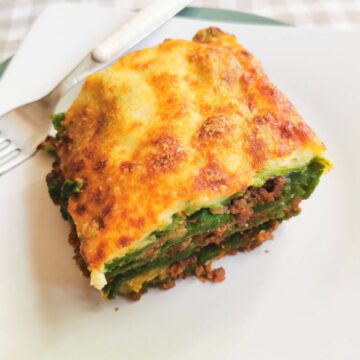Lasagne al forno with Bolognese sauce is probably one of the best known and most loved Italian baked pasta dishes. This recipe is based on the official version of lasagne verdi alla Bolognese from the Italian Academy of Cuisine. It’s made with homemade green pasta sheets, béchamel sauce and Bolognese ragu.
A little lasagne al forno history
The origins of baked lasagna actually date back to the times of Ancient Rome and Greece. The Greek word ‘laganon’ and the Latin word ‘laganum’ were used to describe square or rectangular sheets of ‘pasta’ made from wheat flour. These were baked in the oven or on the fire and stuffed with meat.
The Roman ‘cookbook’ Apicius (a collection of Roman recipes compiled in 1st century AD) includes a ‘lagana’ formed by thin sheets of dough stuffed with meat and cooked in the oven. But, of course this only vaguely resembled the lasagne al forno we know today.
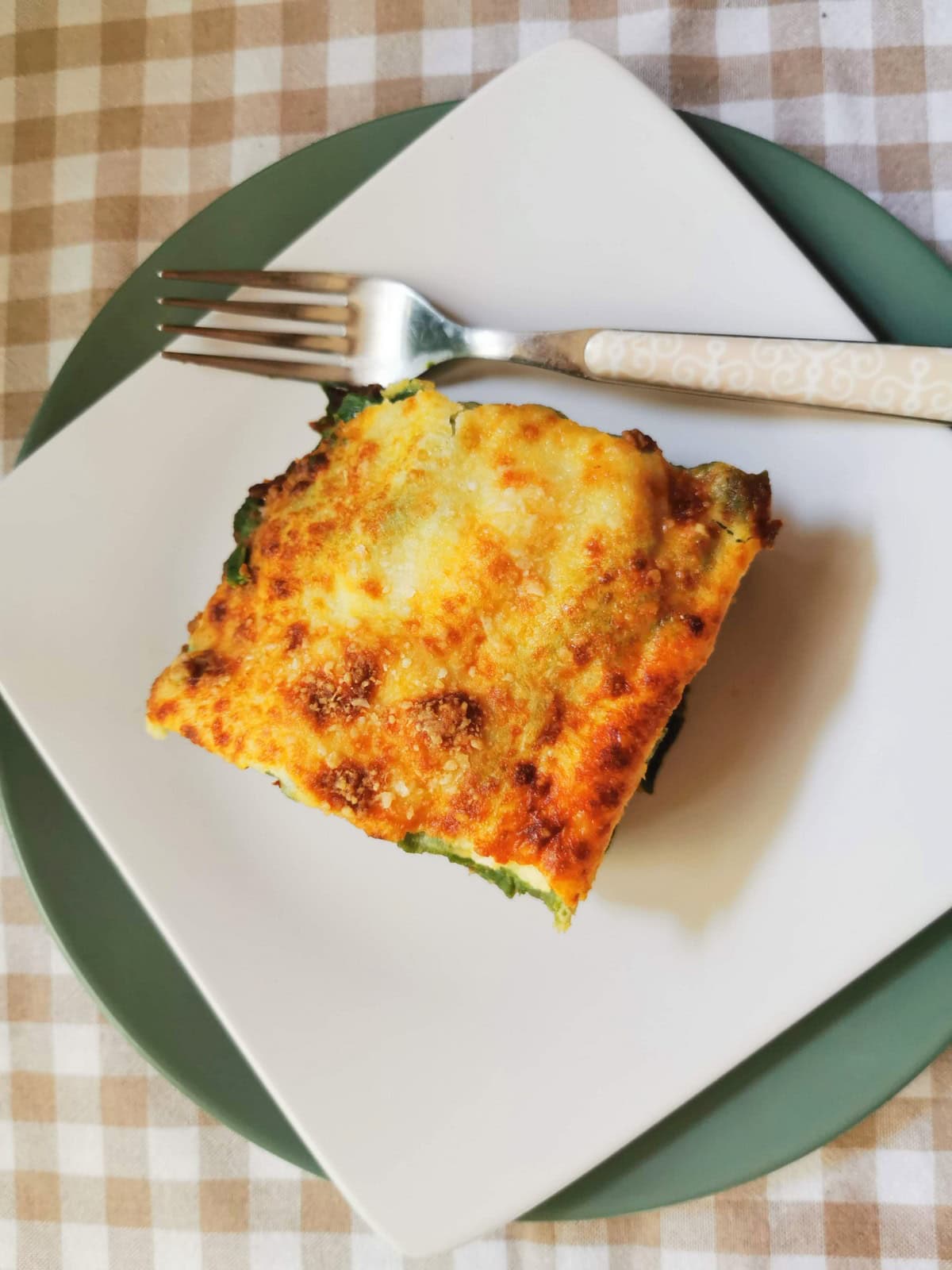
Although lasagne pasta was popular in the Middle Ages, it wasn’t made with eggs until the invention of egg pasta in Northern Italy in the Renaissance period. Béchamel sauce was also not invented until the Renaissance and tomato sauce didn’t enter the equation until the 18th century. So, it was only then that lasagne al forno started to look like the much-loved dish of today!
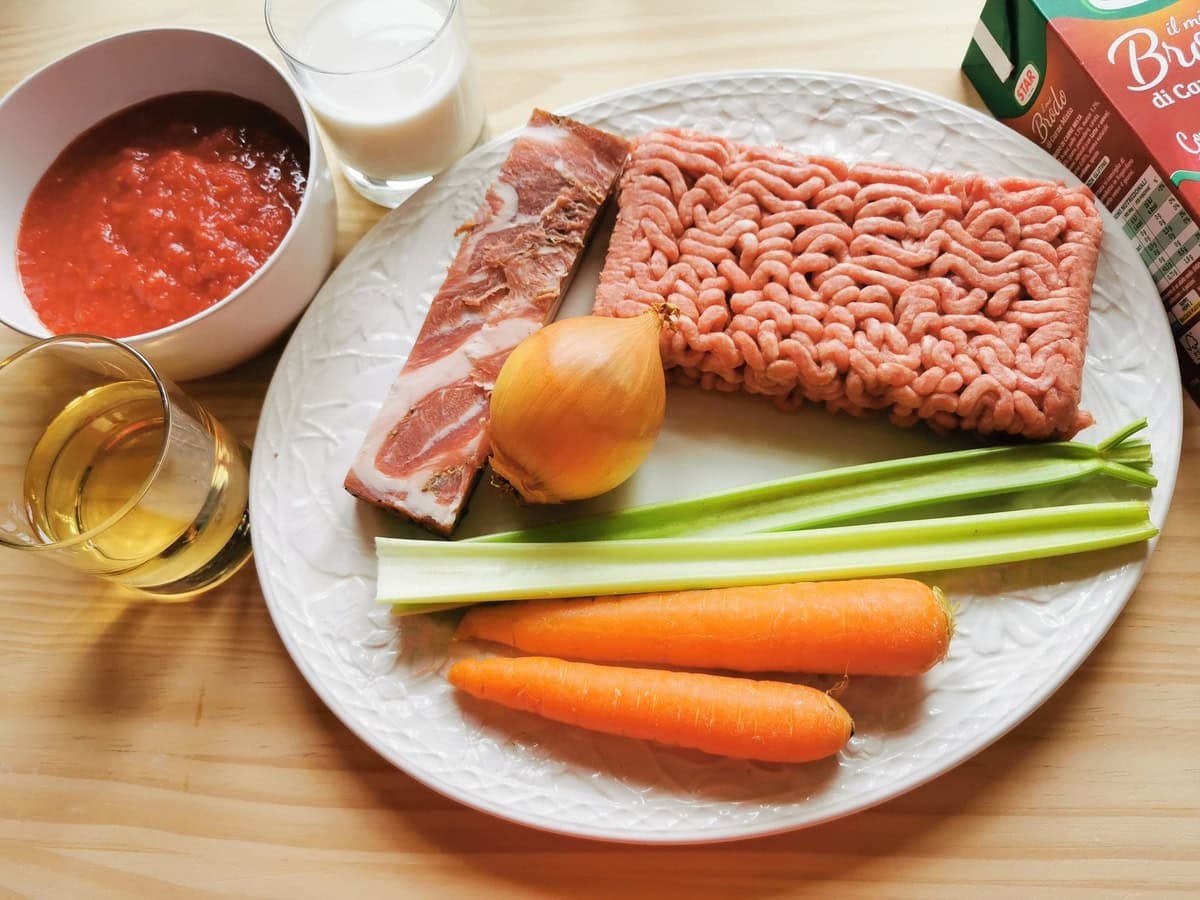
Different Italian versions of lasagne al forno.
Here in Italy, two regions claim the invention of baked lasagna, Emilia-Romagna and Campania (Naples). However the Neapolitan version includes ingredients such as meatballs, sausage, hard boiled eggs and ricotta cheese rather than béchamel, as well as other cheeses like provola and pecorino.
Also, the lasagne pasta used in Naples has ruffled or wavy edges (lasagne ricce). Because it’s such a rich dish, Neapolitan lasagna is mostly made on special occasions, especially at Carnival time. This dish was traditionally served on Mardi Gras as a kind of last blow out before Lent, as it was filled with many ingredients that were banned during Lent.
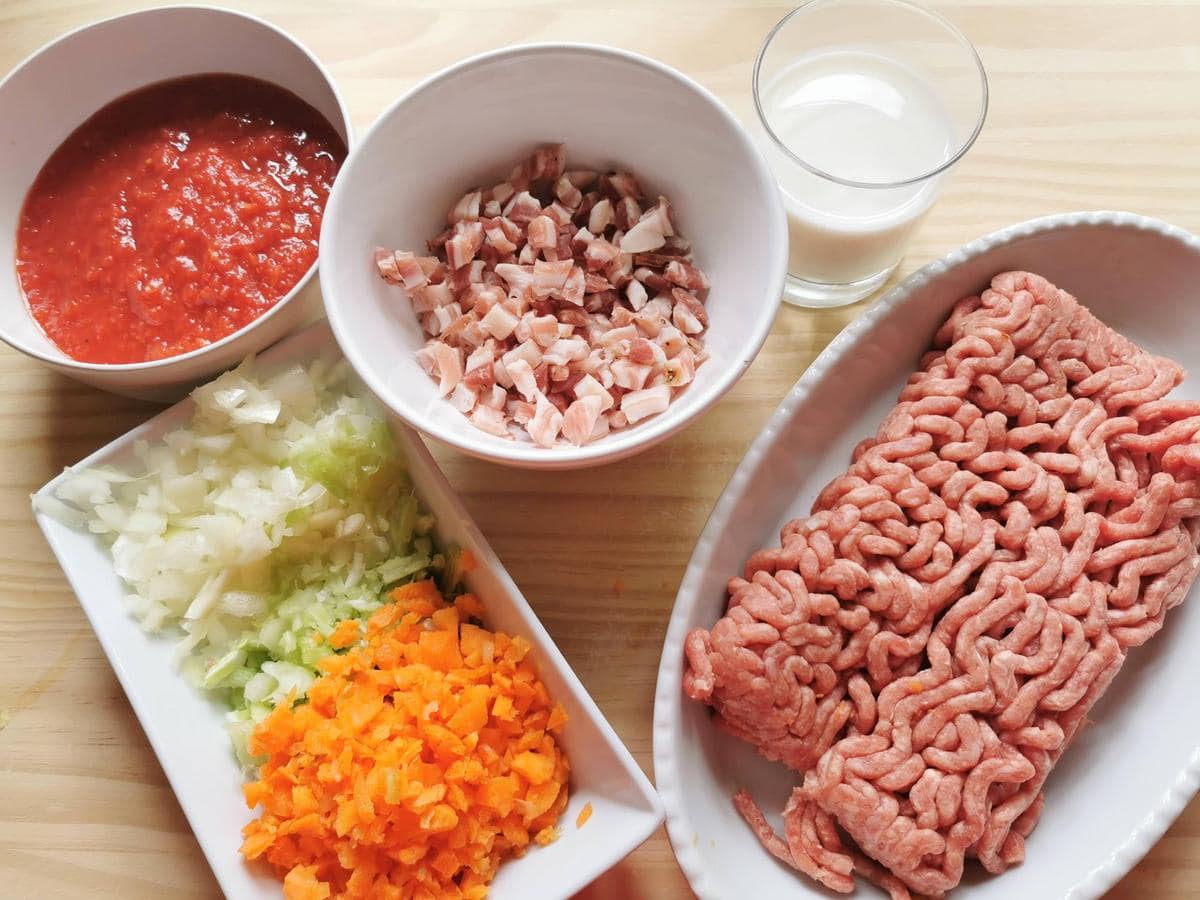
Green lasagne al forno in Emilia Romagna.
Neapolitan lasagne al forno is magnificient, but the dish most non-Italians call baked lasagna or just lasagna is the one from Emilia-Romagna. This classic Italian lasagna recipe is made with Bolognese ragu, a creamy béchamel sauce and normal lasagne sheets which are often homemade, but can also be bought fresh or dried.
I used homemade green pasta sheets as in the official recipe for lasagne al forno from the Italian Academy of Cuisine. You can also use homemade or fresh normal lasagne sheets or dried pasta. Dried lasagne sheets will need to be half-cooked before assembling the final dish.
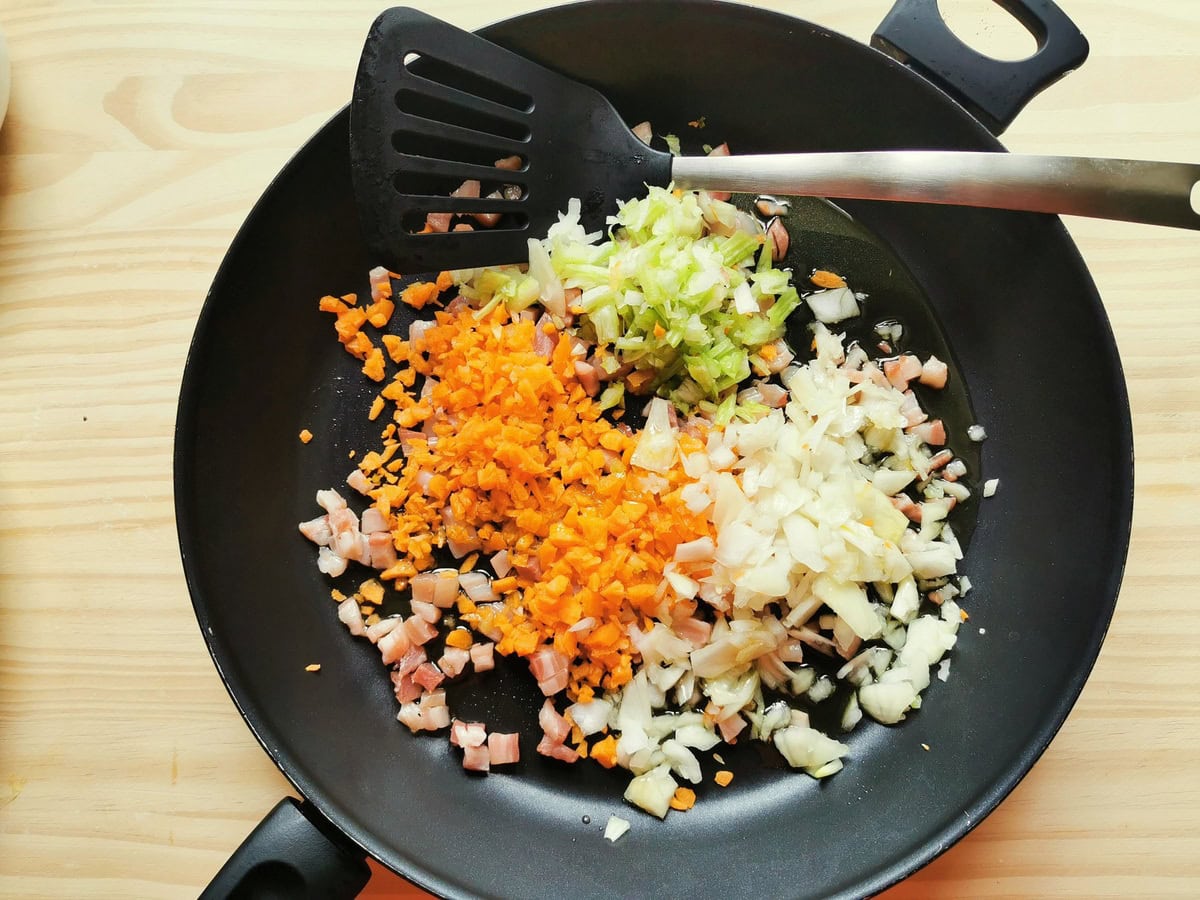
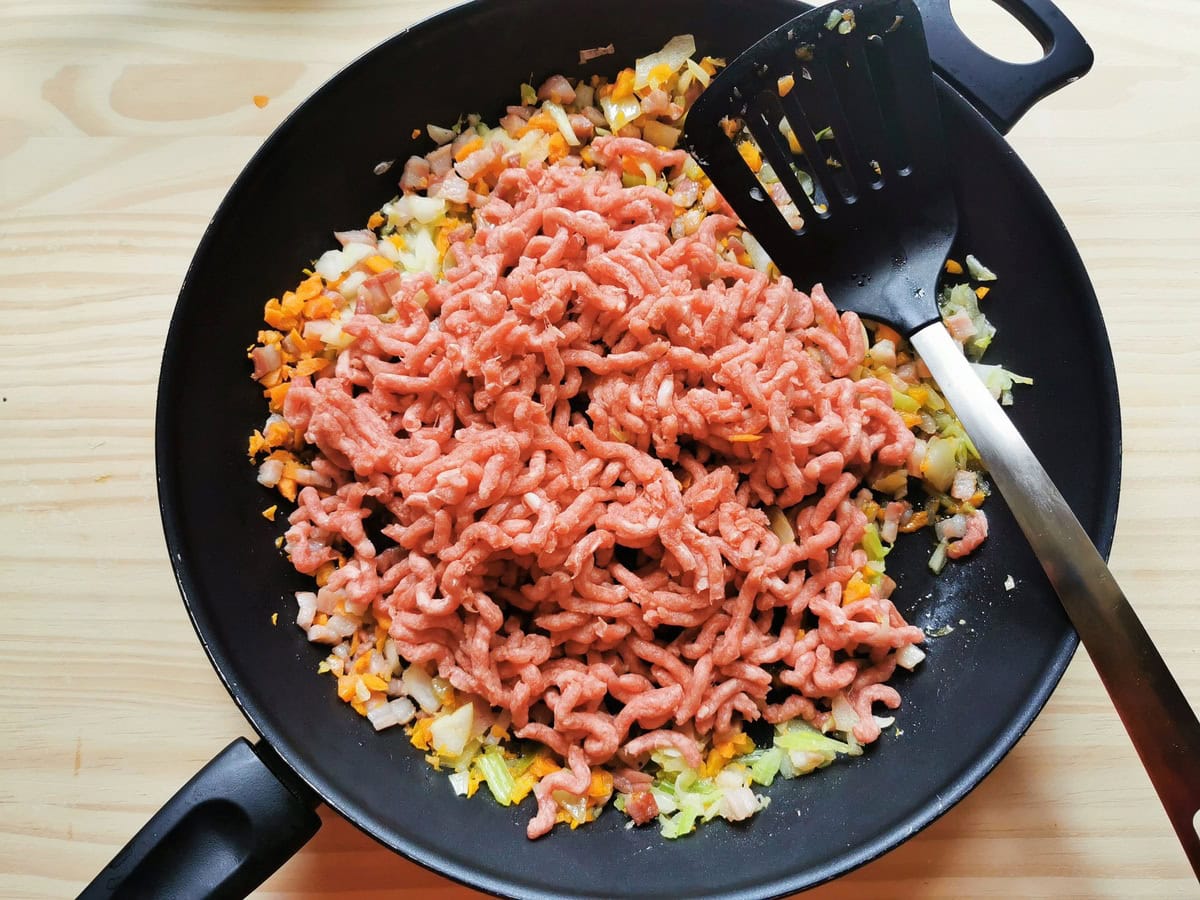
Ingredients for lasagne al forno with Bolognese.
For the Bolognese.
Ground Beef : It’s better to use a good quality coarsley ground beef, preferrably not lean because the fat adds flavor and keeps the meat moist. The best cuts are shoulder or chuck, brisket, plate or flank.
Pancetta: Fresh unsmoked pancetta is the most commonly used in Italy for ragu. Italians call it pancetta dolce, meaning sweet. I buy pancetta in slabs but you can also use ready cubed pancetta.
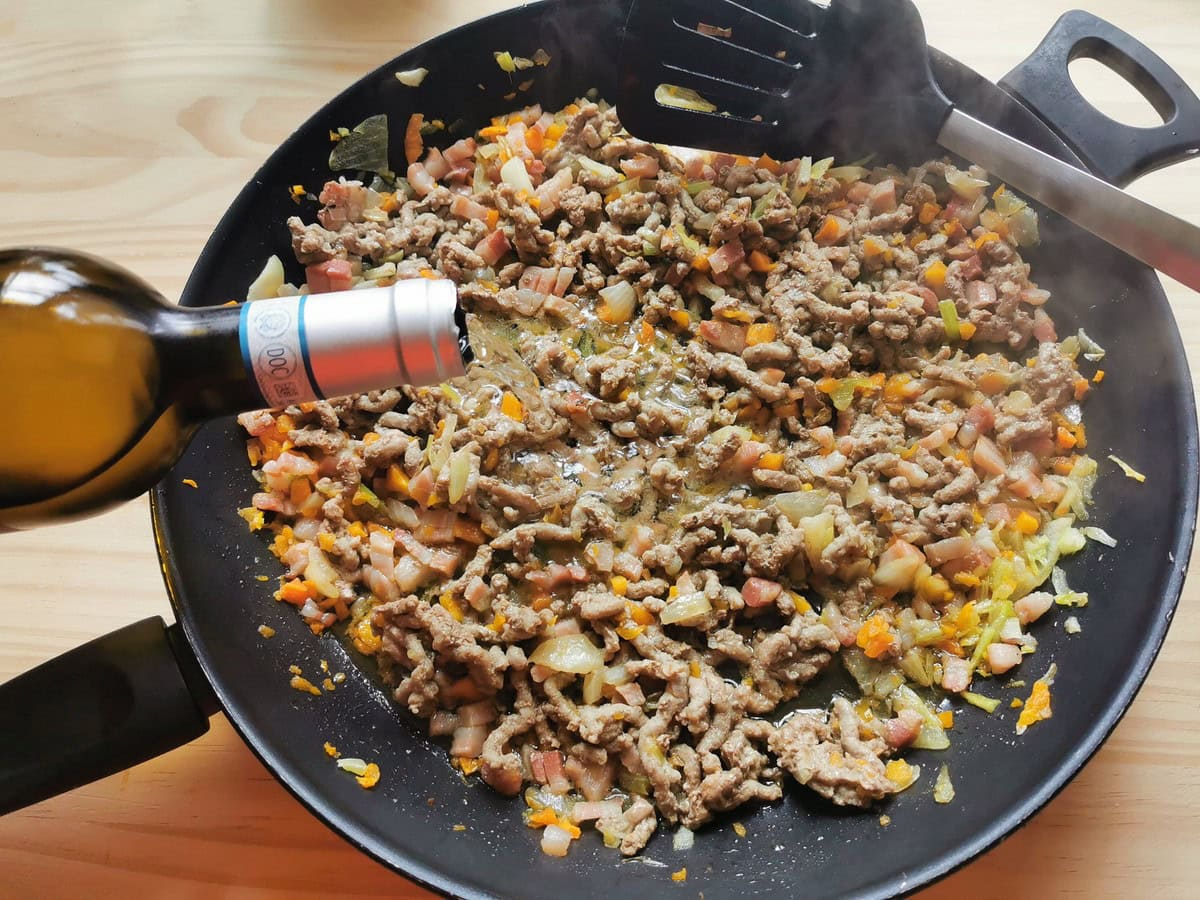

Aromatics: The base for bolognese is a soffritto (mire poix) of carrots, onions and celery. Traditional Bolognese doesn’t include garlic or hebs like parsley or rosemary.
Tomatoes: Italians use canned peeled or chopped tomatoes or passata for this ragu. Fresh tomatoes can be too watery. You can also add a little tomato paste for a more intense tomato flavor.
Milk: Milk is optional but it’s traditionally added to reduce the acidity of the tomatoes and gives Bolognese its characteristic orangey colour.
Broth: You can use a light beef stock or vegetable broth (or stock cubes). You will need about a cup but maybe more if the sauce dries out.
Wine: You can use white or red wine. I used a dry white wine.
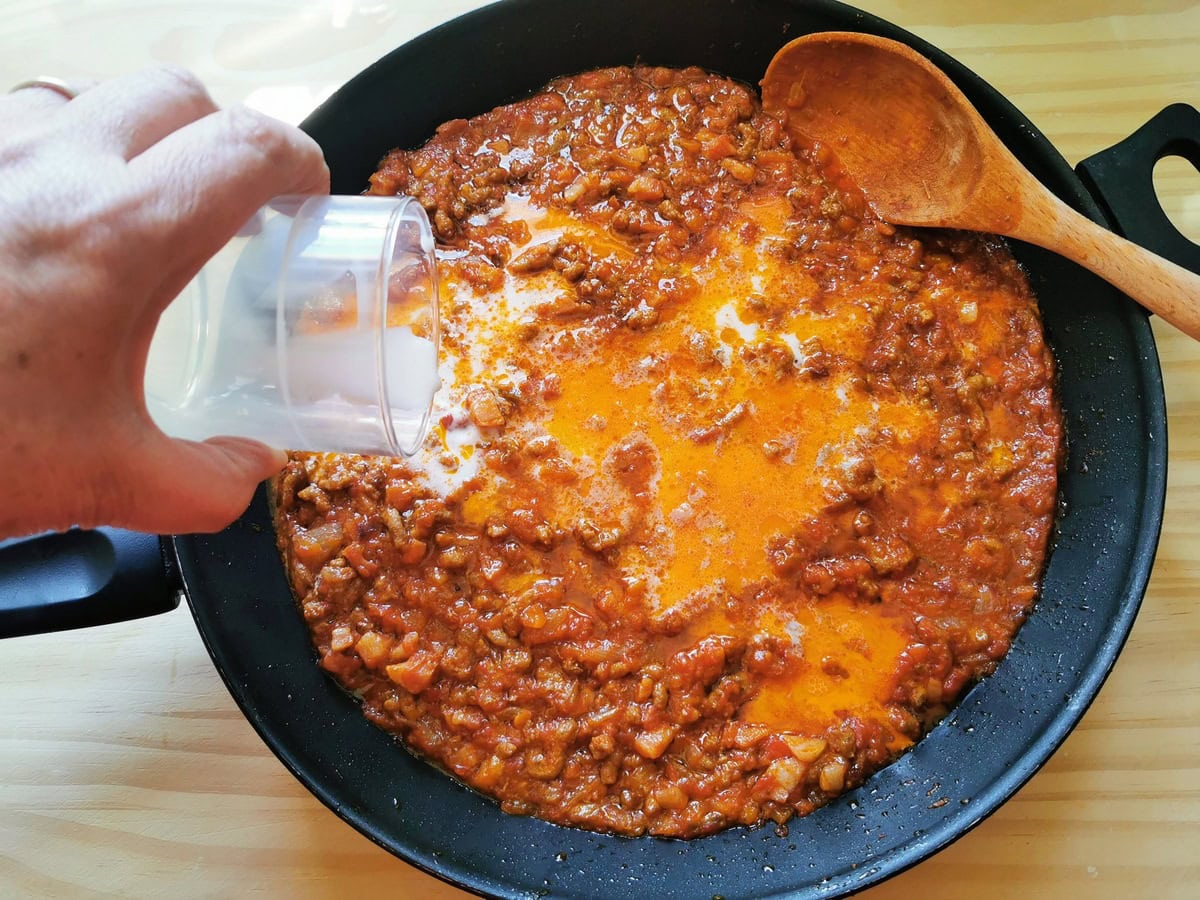

How to make the Bolognese sauce.
1. Finely chop the onion, celery, and carrot (do not use a food
processor).
2. Sauté the chopped pancetta with a little olive oil. Add the vegetables to the oil and pancetta and cook over a low heat, stirring constantly with a wooden spoon until softened but not browned.
3. Raise the heat to medium and add the ground meat, break it up, then cook for about ten minutes until it sizzles and browns.
4. Add the wine; cook over a medium heat until it has completely evaporated. Add the tomato paste (if using) and passata. Mix well and add a cup of hot broth (or water) and then simmer, covered, for about 2 hours.
5. Add milk if using. Mix again and simmer for another hour. Season with salt and pepper before serving.

Ingredients and instructions for béchamel (white sauce).
Milk: Use whole milk to make béchamel. Skimmed milk is too watery. I like to use an organic milk for its flavor and nutritional value.
Butter: Italians mostly use unsalted butter. If you use salted butter, don’t add salt to the béchamel.
Flour: You will need the same weight of flour as butter. For lasagne al forno, I use 75g (about 2.5 oz) of each. The flour is white soft wheat flour such as Italian ’00’ flour or all-purpose flour.
Nutmeg: Freshly grated nutmeg has much more flavor than ready grated.

Ingredients for the homemade green lasagne sheets.
Flour: Use Italian ’00’ flour or all-purpose flour for the pasta dough and some semolina hard wheat flour for dusting.
Eggs: I like to use large organic eggs for their flavor, color and nutritional value. You may need to add an extra egg if using small eggs.
Spinach: Wilted fresh spinach is better than frozen spinach which has a lot of wter. However, you will need to squeeze as much water out of the spinach as possible and purée it with a food processor.
Other ingredients: A little salt and a tablespoon of olive oil.


How to make green lasagne sheets.
The first step to making the green homemade pasta is to wilt the spinach in a pan. Then you need to drain it well and chop it. I usually squeeze the cooked spinach in a tea towel to get as much liquid out of it as possible. Once the spinach is chopped, then purée it in a food processor until smooth.
1) Sieve the flour into a bowl, add the eggs and spinach, a pinch of salt and a tablespoon of olive oil. Beat the eggs with a fork and then mix the flour, eggs and spinach together until you have the beginnings of a dough.
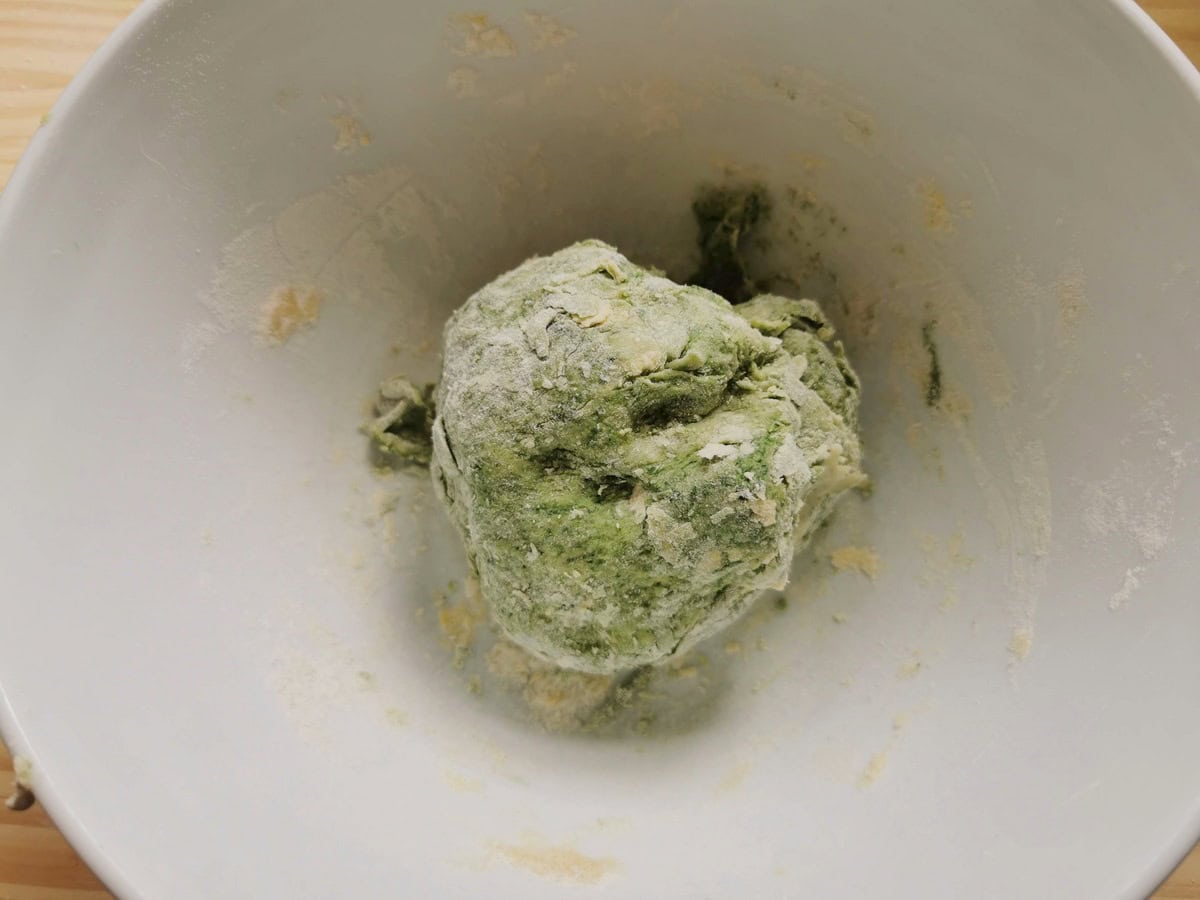
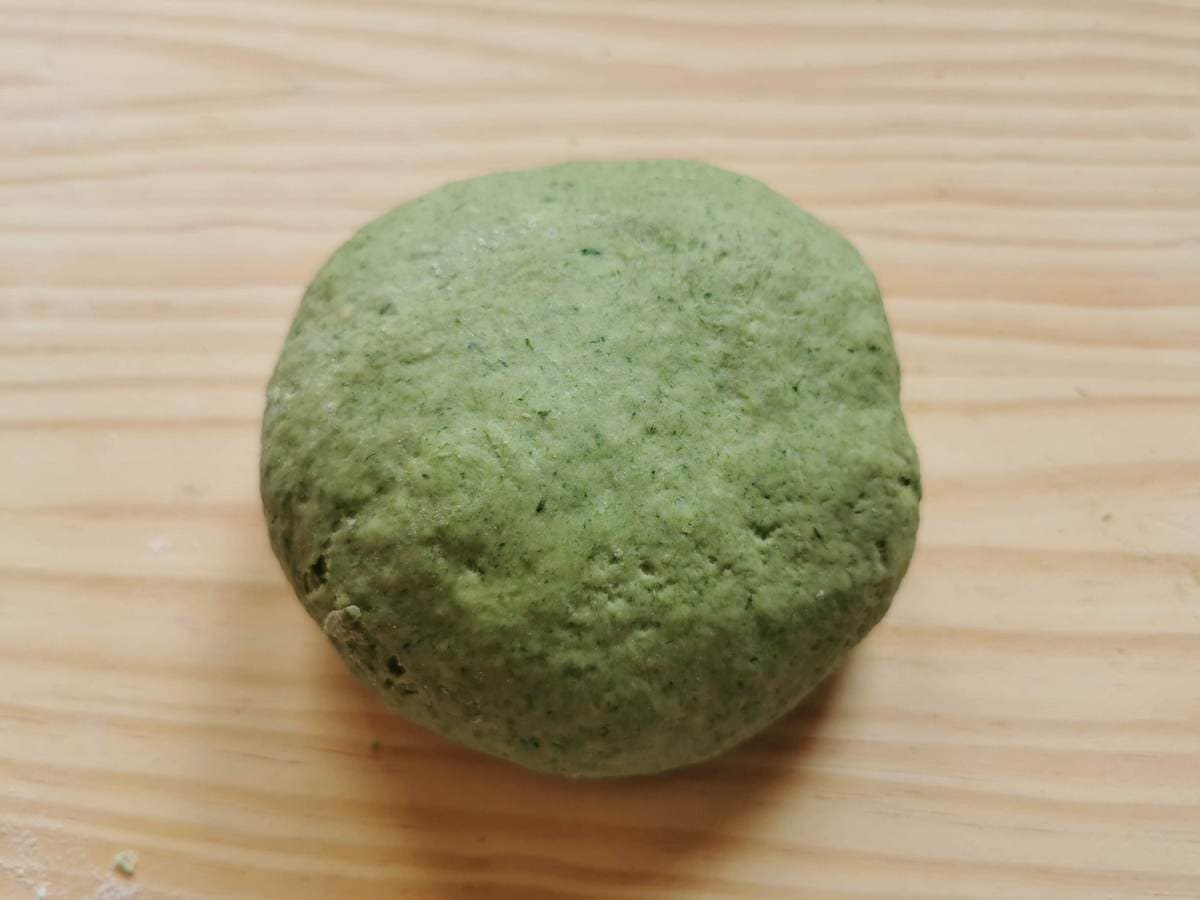
2) Next, use your hands to knead the dough in the bowl until it no longer sticks to the side of the bowl.
3)Turn the pasta dough out onto a well-floured work top and knead for 10 minutes until the dough is soft and pliable. Then roll the dough into a ball, wrap it in plastic wrap (clingfilm) and let it rest for about 30 minutes..
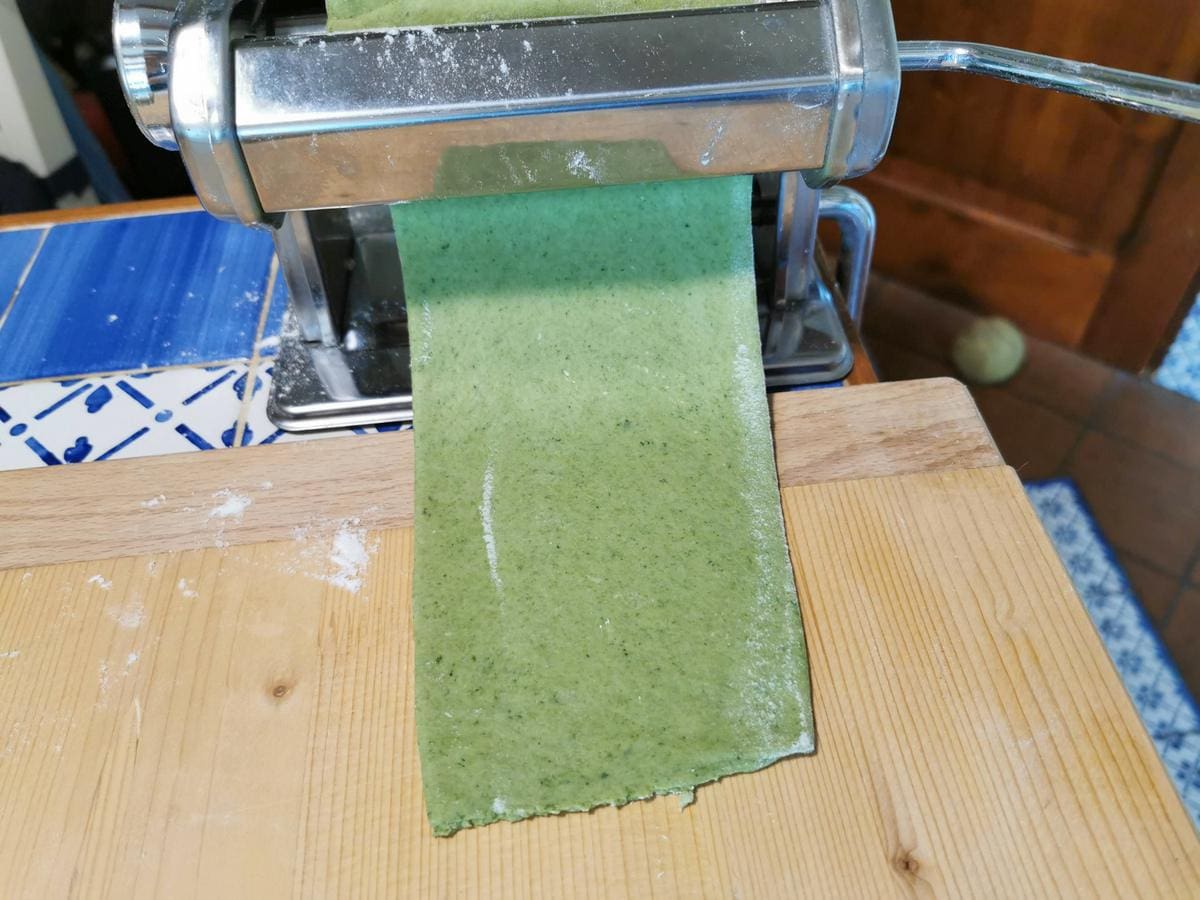
4) Cut off about a quarter of the dough, flatten it slightly with your hands or a rolling pin, then pass it through your pasta machine 3 times through the widest setting. I fold the dough sheet into thirds the first 2 times I pass it through the widest setting. Then pass it through the next settings until the sheet is thin enough to make lasagna with.
On my machine the widest setting is 7. I passed it though 7 (3 times), then 5, then 3.
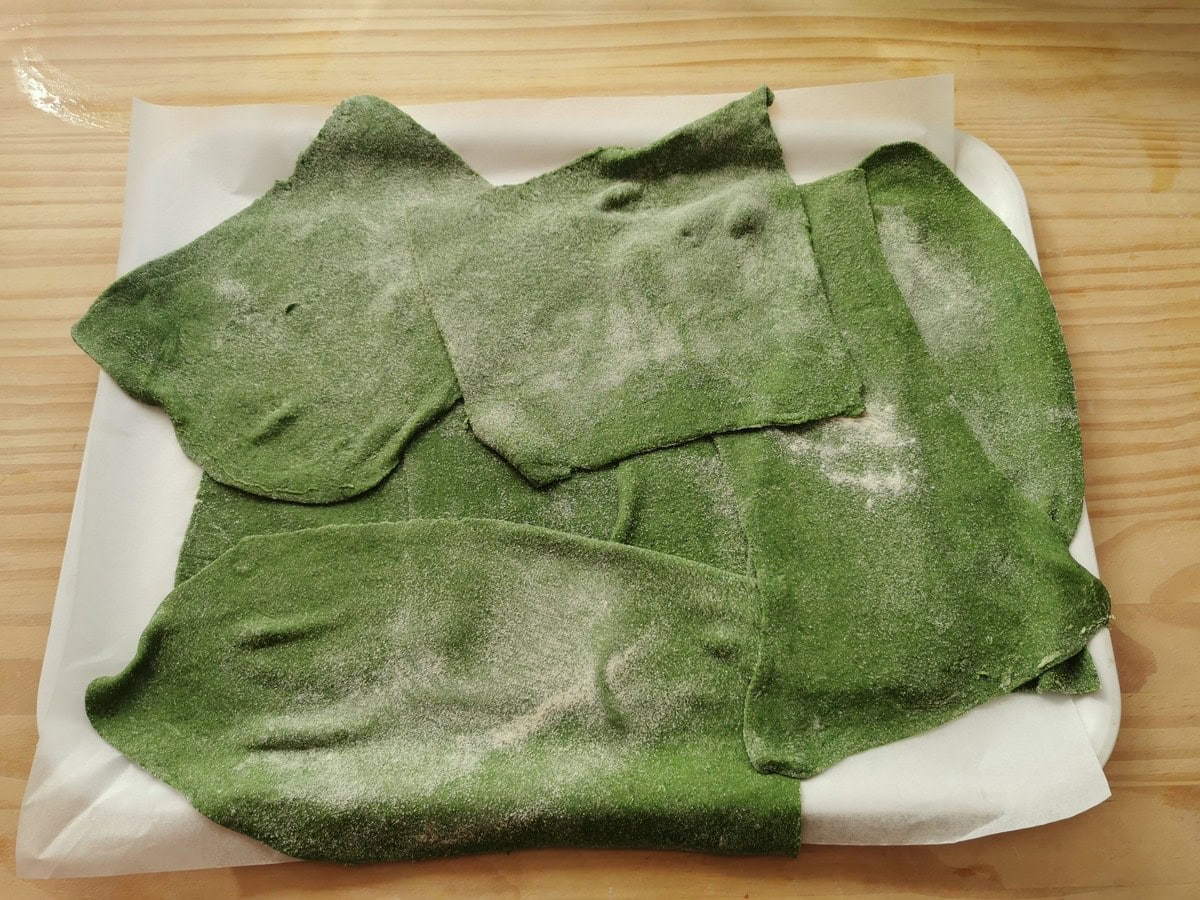
5) Finally, transfer the dough sheet to a floured work top and cut to the size you want, if necessary. Lay ready lasagne sheets on a flour dusted tray while you finish making them all and are ready to assemble your lasagne al forno with Bolognese.
How to assemble and bake your lasagne al forno.
Once your green pasta sheets, Bolognese sauce and béchamel sauce are all ready, it’s time to assemble your lasagna.
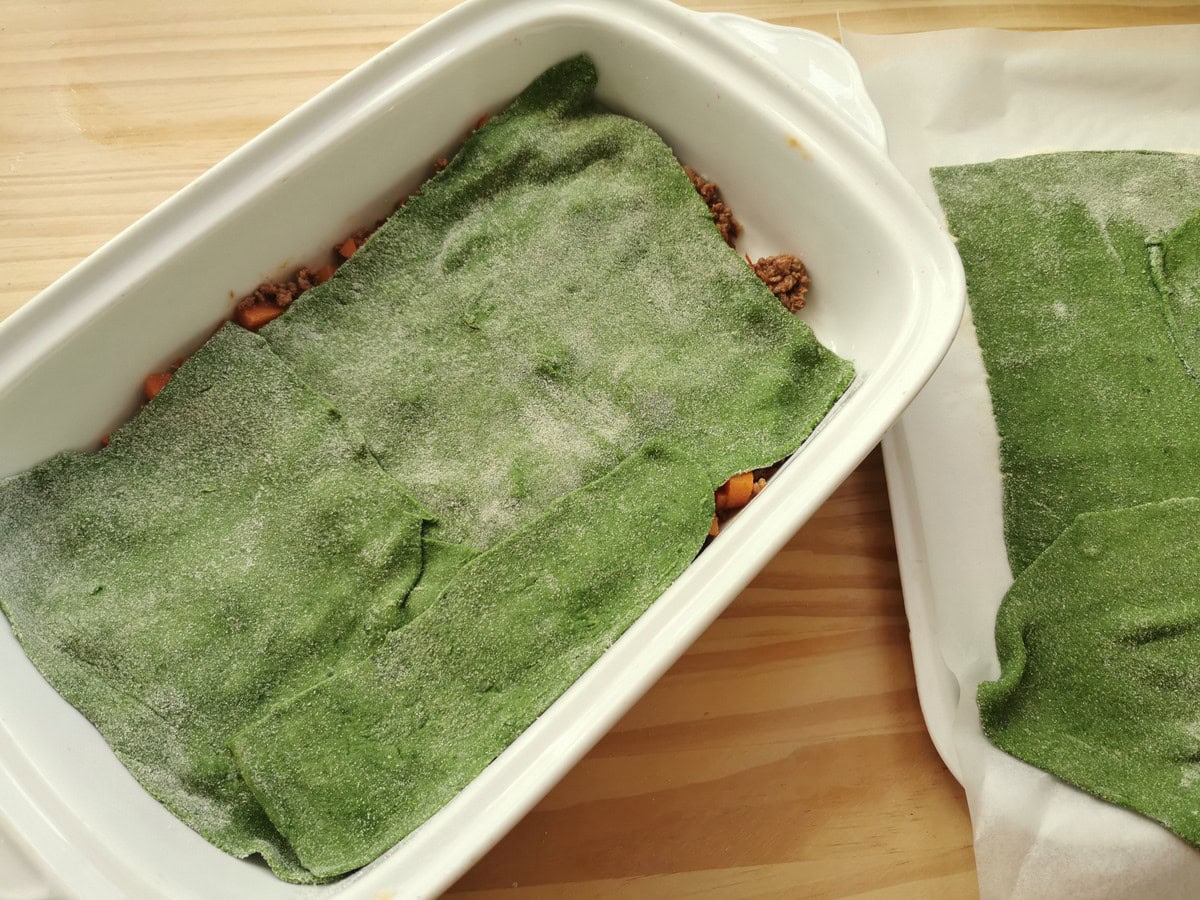
1) Spread a layer of Bolognese sauce over the bottom of a buttered rectangular oven dish. Then cover the sauce with lasagne sheets.
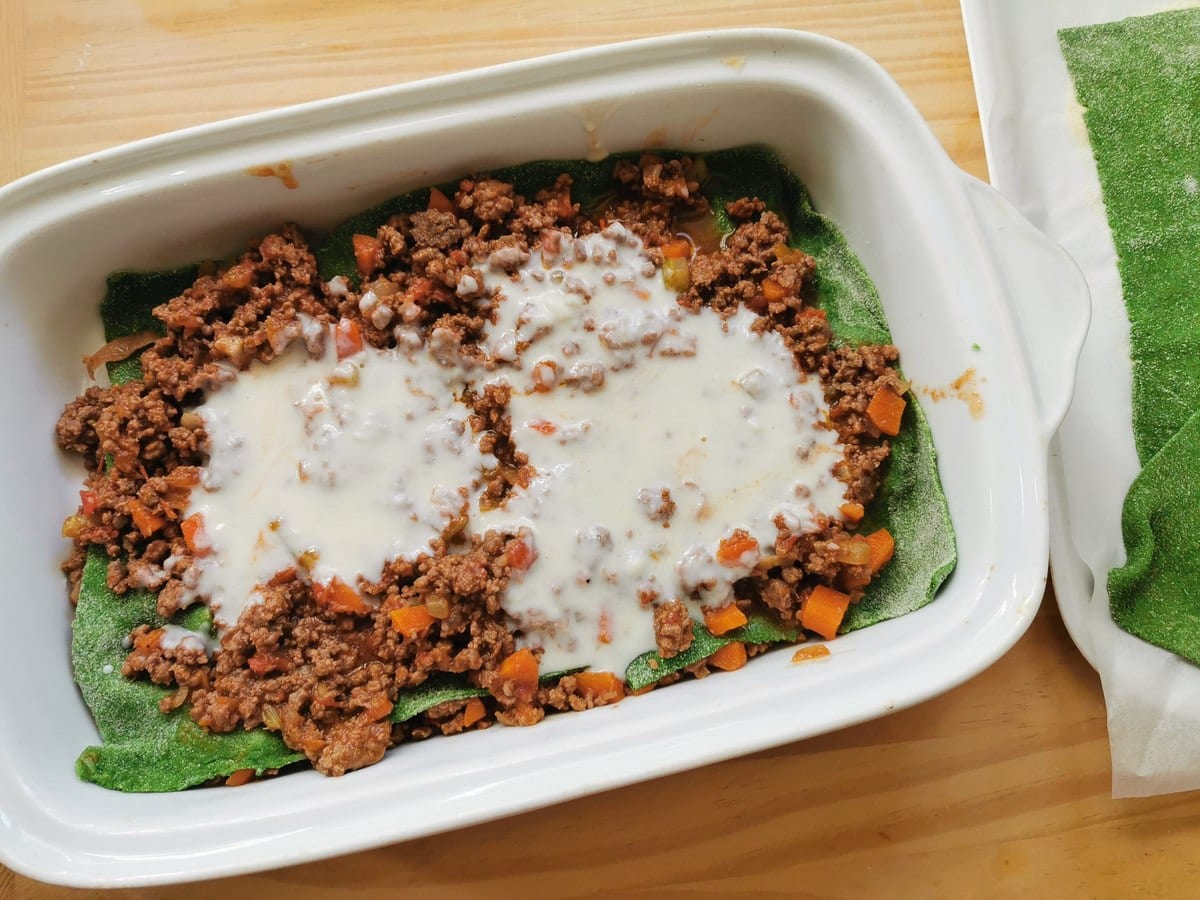
2) Make another layer of Bolognese sauce on top of the lasagne sheets. Add a thin layer of béchamel sauce and some grated Parmigiano Reggiano (parmesan cheese). Cover this layer with more lasagne sheets, then Bolognese, béchamel and grated cheese. Continue until you have 4-6 layers, depending on the size of your oven dish.

3) Cover the top of the last layer of green lasagne sheets with the rest of the béchamel and a generous sprinkling of Parmigiano.
4) Bake your lasagna in a preheated oven at 180°c (356°F) for about 30 minutes. If you want the top to be a little more golden brown, put the lasagna under the grill for just 1-2 minutes.

5) Let the baked lasagne al forno rest for 5-10 minutes before cutting and serving. The Italian Academy of Cuisine states that a perfect serving of lasagna remains ‘in piedi’, meaning it holds together well when portioned.
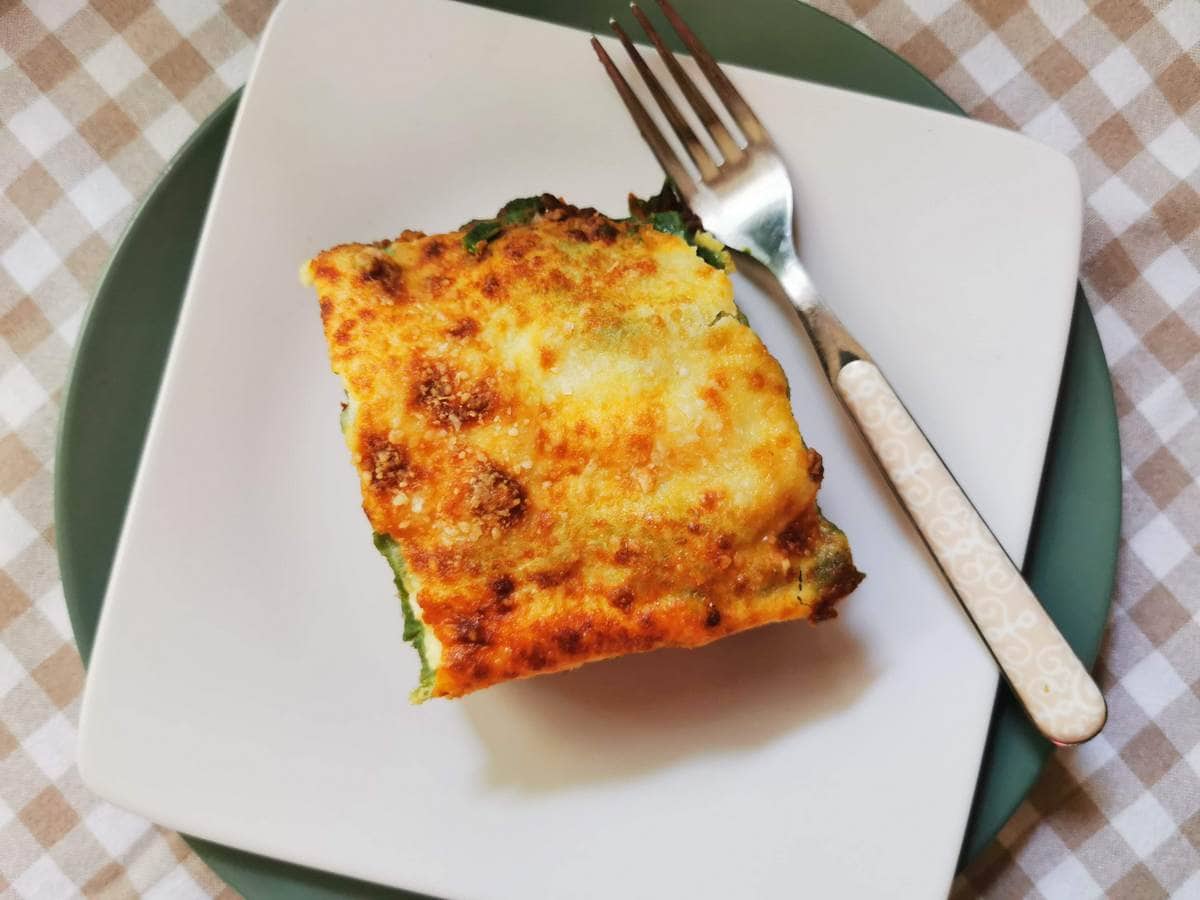
What to do with leftovers.
If you have leftover cooked lasagna you can keep it in the fridge for 3-4 days in an airtight container. Reheat covered in aluminum foil in the oven, or in the microwave until hot all the way through.
FAQs
As long as all the components (ragu, béchamel and pasta) are room temperature, you can keep an assembled but uncooked lasagna in the fridge for up to 24 hours before cooking.
Yes, you can keep an uncooked lasagna in the freezer for up to 3 months. Let it thaw in the fridge for 24 hours before baking. If you forget to defrost your lasagna, then add an extra 30-40 minutes to the cooking time and keep it covered with foil until the internal temperature reaches at least 70°c (160°F)
From pesto to vincisgrassi.
Lasagne al forno is made in other Italian regions too. However, they each add a local touch to the dish. In some areas, for example, the meat sauce is often replaced by mushrooms.
In Liguria, they make baked lasagna with pesto. Here in Veneto they use red radicchio from Treviso. Whilst in Umbria and Marche there is a particular version of lasagna al forno called vincisgrassi. For this they enrich the meat sauce the meat sauce with chicken or pork giblets.
The meat sauce is replaced by porcini mushrooms, truffles and pecorino cheese in the Apennine mountains. In Sicily, there is also an ‘alla Norma’ version, with eggplant. And last but not least here in Veneto, asparagus lasagna is a popular spring recipe.
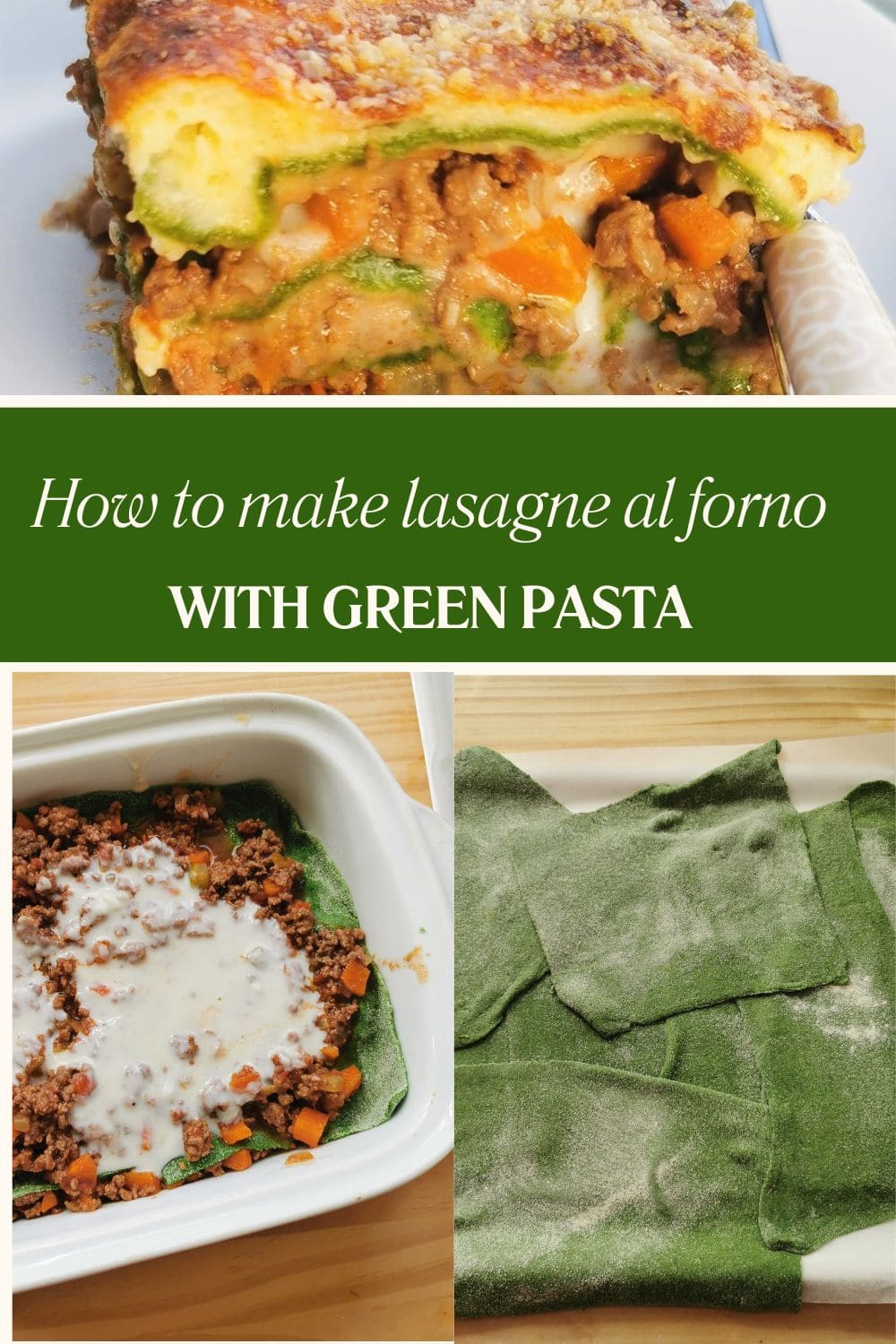
Homemade is best!
You can make this lasagne al forno with store bought pasta and ready-made béchamel for a quicker meal prep. However, making your own pasta and béchamel will definitely have the best results and is so worth the effort.
Let me know what you think.
If you make this baked lasagne al forno with Bolognese recipe, I’d love to hear how it turns out and if you liked it. Please leave a comment here on the blog or on The Pasta Project Facebook page.
Looking forward to hearing from you!
Buon appetito!
Have a look at these other Emilia-Romagna pasta recipes for more delicious pasta recipes like this one!
Reader Interactions

